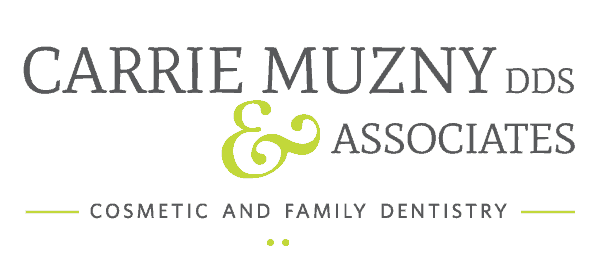
Tips to Prevent Gingivitis
While on our journey to achieve those perfect sets of pearly whites, we often forget that the look and strength of your teeth depend on the health of our gums. Dentists often receive patients experiencing an array of symptoms they think is associated with the tooth pain but is actually a symptom of periodontal disease or, more simply put, gum disease.
Gingivitis is one of the very first indicators of gum disease. A common and mild inflammation of your gingiva (i.e., the part of your gum that surrounds the base of your teeth), gingivitis starts out with forgiving symptoms such as slight irritation, redness, or swelling of the gums. It’s easy enough for most people to ignore until, of course, the symptoms worsen and turn into more painful and noticeable markers of severe gum disease and even tooth loss.
A solid understanding of how gingivitis develops, what sort of symptoms you should be looking out for, and, most importantly, how to prevent gingivitis can help you achieve complete oral health and a smile that feels and looks great.
What Causes Gingivitis?
There’s no mincing words: The number one cause of this unpleasant condition is poor oral hygiene.
Neglect brushing, flossing, and rinsing with mouthwash often enough and a slimy, sticky film of bacteria called plaque begins to build up on the surface of your teeth. Without removing it every day, plaque forms and reforms until it hardens under your gum line, turning into tartar within just 72 hours. Tartar and plaque then begin working hand-in-hand to make your oral health increasingly more difficult to manage: Tartar protects bacteria and food scraps from being removed from your teeth while plaque continues to build up, releasing acids that decay away your enamel, making your teeth even more vulnerable.
It’s a vicious cycle that ultimately can’t be stopped without a professional dental cleaning to remove the tartar and a strict new routine to maintain oral hygiene.
Here are other factors that can increase your risk of developing gingivitis:
- Smoking and chewing tobacco.
- Poor nutrition.
- Old age.
- Dry mouth.
- Recreational drugs and pharmaceuticals.
- Any medical condition that lowers your immunity.
- Poor dental work and ill-fitting restorations that are difficult to clean on your own.
What are the Symptoms of Gingivitis?
It’s important to keep a keen eye on your gum health since gingivitis can easily slip under the radar. Its symptoms can be relatively innocuous and, thus, easy to ignore until, of course, they become painful, aesthetically displeasing, or foul-smelling enough that you can’t!
Here are some of the symptoms you should be looking out for early on:
- Red or purple gums: Healthy gums should look pink.
- Swollen or puffy gums: While their name betrays them, your gums shouldn’t actually look gummy. Healthy gums are firm and look relatively proportionate to the size of your teeth.
- Bleeding: Look out for signs of blood on your toothbrush or floss as well as when you spit out into the sink.
- Sore or tender gums: Gums, unlike teeth, rarely get painful but, if they feel tender to the touch or when you brush or floss, this may be a sign of gingivitis.
- Bad breath: Remember that gingivitis is caused by bacteria and food scraps stuck in pockets between your gum and your teeth—there’s no way that has the most delightful aroma! If your breath still smells foul or sour even after brushing your teeth or popping a mint, it may be time to investigate if the problem is coming from your gums.
How to Prevent Gingivitis
The cause of gingivitis is straightforward as its prevention: Good oral hygiene!
The best thing to do is to revisit your dental routine and see if it can be improved and made more consistent. Here are some tips you can almost immediately pick up:
-
- Brush your teeth for two minutes twice a day and floss once a day: Brushing your teeth in the morning and before bed, plus a solid floss that gets both sides of each tooth in a push-pull motion, is the absolute minimum for maintaining oral hygiene. If your dentist recommends, you may brush more. Remember to floss before you brush so you can loosen away food particles and bacteria that your toothbrush can catch and your mouthwash can rinse away.
- Use mouthwash: After flossing, be sure to use mouthwash to kill any remaining bacteria on your teeth. The mouthwash you select should be labeled as antigingivitis, antibacterial, or antiseptic!
- Watch what you eat: The bacteria that make up your plaque and tartar thrive off starches and sugars—in fact, that’s where many of them come from! Stay away from extra starchy and sugary foods as much as possible and increase your intake of essential vitamins calcium. Your entire body, not just your gums, will thank you.
- Visit the dentist every six months: While brushing, flossing, and rinsing regularly is excellent, you need a qualified professional with the right skills and tools to remove tough tartar that’s already built up under your teeth, especially from hard-to-reach reach places like the back of your molars. Remember that tartar can only be removed by a professional cleaning, meaning that, if you put it off long enough, even the most rigorous brushing won’t prevent gingivitis.
A Dentist You Want to Visit Every Six Months
Preventing gingivitis takes everyday efforts but also relies on the regular support of a dentist and dental hygienists. That means that you want a reliable, competent, and knowledgeable partner to walk alongside you as you strive for optimal oral health.
For years, Dr. Carrie Muzny DDS and her dental team have been that trustworthy partner for patients in the Woodlands, Benders Landing, Woodforest, Spring, and the Conroe/Montgomery area. Using our abundant knowledge and experience in painless procedures, robust teamwork, and cutting-edge dental technology, we deliver exceptional dental care and customer service so you can feel confident and comfortable walking into their office every six months.
Visit us today to see how, together, we can get your gums and teeth both healthy and beautiful!

